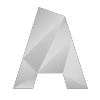Sinterit releases Lisa 2 SLS 3D Printer
With the release of Lisa 2 SLS 3D Printer I want to revisit the Lisa SLS 3D Printer on-site review and go through the process of what SLS enables you to and how SLS works.
Image courtesy of Sinterit
Sinterit Lisa 2 SLS 3D Printer
Sinterit announced the successor of the Lisa with the Lisa 2 SLS 3D Printer today and it looks to be a great successor to the first Lisa. We’re seeing new and improved features that should meet what customers have been asking for, as well as more options for more customers.
Before we revisit what SLS is and how simple Sinterit have made the technology we of course want to go through the new release.
New features and larger build volume
Lisa 2 SLS 3D Printer enables more materials thanks to an open material system as well as a quite impressive nitrogen build chamber option for more advanced materials.
The new chamber features should offer much more flexibility with materials that otherwise react with the gases in our atmosphere when heated.
The larger build volume in Lisa 2 have been increased to 110 x 160 x 250mm, compared to 110 x 130 x 150mm. With the complete design freedom, this enables an Max size diagonally of 316mm compared to previous 227mm.
Stronger materials for 3D printing
When looking through the Lisa 2 SLS 3D Printer material specification for their new PA11 material you can see that it offers a 31% increase in tensile strength compared to PA12, which already was a great material for strong and useful parts.
Having a smaller grain than PA12 (15-76μm compared to 20-100μm) the finish should also be a bit more pleasing while the parts fuses slightly better.
With those materials release, we’re hoping to see even more released soon!
The complete specification of Lisa 2 SLS 3D Printer.
Here’s the full comparison comparison pdf. as well as powder material pdf.
How SLS 3D Printing works
When I got to visit sinterit for a on-site Review of the Lisa 1 SLS 3D Printer system in 2017 I documented the process from idea/sketch to finished and processed print.
If you’ve missed the (quite interesting and thorough) video about Sinterit Lisa here under. I recommend adding it to watch later” if you’re in a hurry. It’s packed with Sinterit features, prints, parts and much more.
What SLS 3D Printing is
SLS stands for Selective Laser Sintering and works by a laser melting and fusing a powdered material into a solid.
The laser heats the small particles in the powder.
The powder is distributed into very thin layers, almost like thin sheets of paper. The layers are stacked upon on each others as in other layered 3D printing processes.
Why is SLS 3D Printing sought after?
One of the strongest arguments to use the SLS 3D Printing technology found in Lisa 2 is design freedom.
The unused (non-sintered) powder of each layer acts as support for the next, giving the ability to fully support models.
Having a powder support allows for very small support layers around delicate parts like joints while still be easily removed.
This allows for very complex parts such as ring mails, moving parts, springs and a lot more.
Image courtesy of Sinterit
Design Freedom
A major feature thanks to the SLS-type support is that designers can ignore the specific printing process. Having a fully embedded and supported process allows any shape to be printed.
Creating assembled products as part of design and prototyping stages is easy with SLS due to the fact that everything is supported while printing.
A great example is that you can create a classic office chair in one part. In other processed the wheels and seat would need support, or be printed in parts. But the unused powder offers a unique support without complex processing afterwards.
With SLS 3D Printer you have a volume to work with, not a build plate and then height like FDM/FFF offer.
Downsides of SLS
The common downside of SLS 3D Printing is that it’s expensive and very complex. The powder require some handling in terms of masks and gloves.
Although most powders aren’t dangerous, you want to keep the powder handling separate from the rest of your office. However, there’s no need for any fumes or handling like metal 3D printing.
Lisa 1 and Lisa 2 side by side. Image courtesy of Sinterit.
The Sinterit SLS 3D Printer systems
Sinterit have created the Lisa 2 SLS 3D Printer (and Lisa 1) to combat price and complexity. Of course without backing down on details and functionality.
One way to achieve this is to use a less powerful laser, while heating the whole chamber to near melting temperature of the powder. This way the laser only have to add a small amount of energy to sinter.
This combination allows for fantastic freedom of design while printing functional and strong prototypes. With a wider range of materials and a complete system price, Sinterit yet again show that SLS isn’t for an elite customer group, but available for small to one-man companies.
Make sure you check out Sinterit Lisa 3D Printer On-Site Review!
Learn more about Sinterit Lisa 2 here. Let me know if you have questions about me experience with SLS 3D Printing in the comments below.

